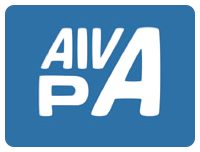Il registro tumori animali: avete un'idea a cosa serva?
The veterinary cancer registry: do you have an idea what is it for?
Authors
Maresca C., Scoccia E., Dettori A.
Osservatorio Epidemiologico Umbria, Istituto Zooprofilattico Sperimentale dell’Umbria e delle Marche, Perugia, Italia
Morgante R. A.
Istituto Zooprofilattico Sperimentale dell’Umbria e delle Marche, Perugia, Italia
Mechelli L.
Patologia Generale e Anatomia Patologica Veterinaria, Università degli Studi di Perugia
Giaimo M. D.
Servizio Prevenzione, sanità veterinaria e sicurezza alimentare della Regione Umbria
Rossi G.
Scuola di Bioscienze e Medicina Veterinaria, Università di Camerino
Manuali E.
Laboratorio di istopatologia e chimica clinica, Istituto Zooprofilattico Sperimentale dell’Umbria e delle Marche, Perugia, Italia
Tibaldi A.
Funzione Veterinaria e Sicurezza Alimentare, della Regione Marche
Summary
Investigations of disease in animals can provide valuable insights into the cause and pathogenesis of human diseases. A major field of comparative epidemiology has been the study of cancer. Next to human, cancer registration provides information for estimation of incidence and the relative risk factors for carcinogenesis giving data for epidemiological studies.
The aim of our study was to demonstrate the usefulness of a Canine Cancer Registry (CCR) using the example of the animal tumors registers Umbria and Marche. Cancer data in canine species in Umbria were reported for year 2014.
Tumors were classified according to the WHO’s criteria for canine neoplasms (World Health Organization International Histological Classification of Tumors of Domestic Animals) and coded according to the International Classification of Disease for Oncology System (ICD-O). The incidence rate (IR), the relative risk (RR) and relative confidence interval (CI) 95% were calculated. The official Canine Demographic Registry established in Umbria Region was used as a primary source order to estimate the size of the canine regional population.
The incidence rate for all cancers was 205.43/100,000 (CI 186.77-225.46).
The IR for females was 245.72/100,000 (CI 217.08-277.09) and for males 165.01/100,000 (CI 141.66-191.11); the relative risk to develop a spontaneous tumor in female dog was 1.49 (CI 1.23-1.8) higher than male dog (p≤0.05).
All age classes compared to class 0-2 years were statistically significant; RR of class 9-11 was the highest (RR=37.11; CI 17.44-78.94).
These data are extremely useful both for the health planning but also for the management of canine hospitals.
Keywords
Canine cancer registry, incidence rate, relative risk, usefulness


